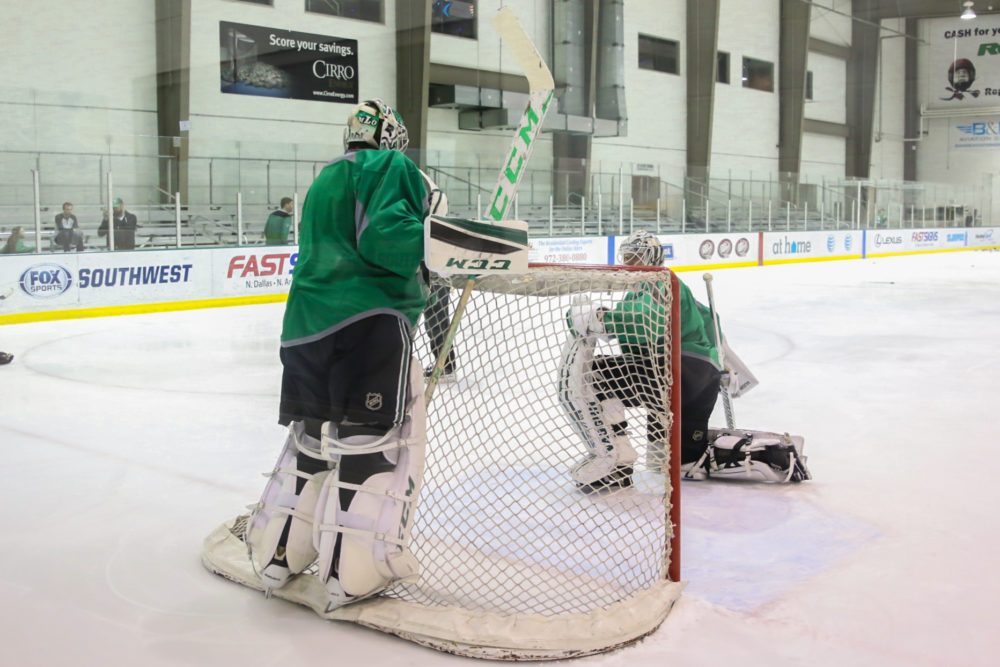For years, the Vezina Trophy was awarded to the goaltender who played the most on the team and allowed the fewest goals. In practice, this generally meant that the award would go to the goaltender with the lowest goals-against average (GAA) – the average number of goals allowed per sixty minutes played.
However, starting in 1981-82, the Vezina was awarded based on a more holistic approach to goaltending. After all, a goaltender’s GAA – and a team’s goals against stat – is more reflective of the team’s play, rather than a particular goaltender’s netminding prowess. GAA is a nice, easy-to-grasp statistic, but it is not ideal for measuring the true worth of a netminder.
Take Lorne “Gump” Worsley, for instance. In 1952-53, he won the Calder Trophy as the National Hockey League’s most outstanding rookie. Clearly, the man had a bang-up season in net. His GAA? An eye-watering 3.06, good for last among goalies who played multiple games that season.
As you might have guessed, his team, the New York Rangers, allowed the most goals in the NHL – by 36 over their nearest contender. 36!!! In a 70-game season, that is equivalent to allowing half a goal more per game than any other team.
Don’t worry, though. Gump would get a Vezina – two, in fact, though it took a move to the perennially powerful Montréal Canadiens to facilitate it.
A New Hope
Enter, for the 1982-83 season, Save Percentage, abbreviated to SV%. Save percentage is the average percentage of shots, out of the total number of shots faced, that a given goaltender stops. Again, pretty simple.
Or is it?
What does save percentage really mean? What separates 2016-17 league leader (10 or more games played) Devan Dubnyk (.940 SV%) from Corey Crawford (.925)? Or Connor Hellebuyck (.910) from Kari Lehtonen (.897)? Can you really look yourself in the mirror and say that Jimmy Howard (.934) is a better goalie than Carey Price (.922)?

Look, let’s be clear: no one stat can explain everything about any player. That being said, save percentage is the best widely available indicator currently in existence for measuring the quality of a goalie’s play.
Advanced stats sites, such as Corsica, even go so far as to categorize shots against by quality, calculating each netminder’s low-danger, medium-danger and high-danger save percentages, as well as save percentage by situation – power play, penalty kill, leading, trailing, etc.
The Big Picture
Since the advent of the “new” NHL in 2005-06, the average NHL team has finished their regular season with a record of 41 wins, 31 losses and 10 overtime or shootout losses (41-31-10), good for 92 points. Now, you might say “92 points… Hey, that’s pretty good!” And yes, in the 11 seasons between 2005-06 and 2015-16, inclusive, 92 points gets your team a playoff spot in eight of those years.
Based on the data from those 11 years, a team can expect to face about 2,452 shots per season. They can also expect to give up 227 goals, for an average team save percentage of about .908 (all situations). If that seems low, consider that this season’s average team save percentage, thus far, is just .910.
So what does each increment of save percentage translate to? Given the aforementioned performance of the average NHL team, each uptick of .000408 in save percentage results in one fewer goal allowed throughout the course of a season. Roughly, that’s about 2.5 fewer goals allowed per .001 of save percentage increase.
The Bigger Picture
Now, NHL teams are involved in approximately 41 one-goal games per year, including wins, regulation losses and overtime/shootout losses. For simpler math, let’s say that number is 40, and let’s say that the average team wins 20 of these games. That leaves 20 one-goal defeats. Figuring conservatively (i.e. assuming no games make it past regulation), the difference between a win and a loss is two goals against.
Now, that’s a lot of supposing. But suppose I’m through supposing and fixed to start figuring.
If .001 of save percentage equates to 2.5 goals allowed, and two goals against means the difference between winning and losing, an increase of .001 in a goaltender’s save percentage might well lead to an extra two points for his or her team. A .004 increase – still seemingly insignificant – would mean 10 fewer goals allowed and perhaps eight or even 10 more points in the standings.
How about those 2006-07 Toronto Maple Leafs, missing the playoffs by one agonizing point (thanks a lot, Wade Dubielewicz)?
Andrew Raycroft played 72 games that year, posting a .894 SV%, good for 46th place amongst netminders with 10 or more games played. Yikes. A still-cringeworthy .898 (which would have ranked 38th) might well have seen the Leafs comfortably ensconced in a playoff position. (Fun fact: his 37 wins from that season are a franchise record.)
For a more recent example, last season’s Carolina Hurricanes fielded a tandem of Cam Ward and Eddie Lack, who combined for a .906 save percentage. A mere .910 might have been sufficient to guide their admittedly offensively challenged team to the postseason.
And this year’s Dallas Stars? Kari Lehtonen and Antti Niemi are sporting a combined .904. Yes, the Stars aren’t scoring at their customary clip, but Dallas is two points out of a wild-card spot at a time when even a .908 might render them a comfortable divisional seed.

A Magic Bullet?
So, with all this said, what is the solution? Should teams try and block as many shots as possible? Well, sure, that could work. It could also lead to screening your own goalie, wayward deflections and gruesome injuries. How about playing structurally in such a way as to limit or altogether eliminate high-danger shots against? Definitely effective, although this is what hockey teams have been trying to do since the dawn of time and I have yet to see one employ an unassailable method of doing so.
How about playing in such a way as to limit or altogether eliminate high-danger shots against? Definitely effective, although this is what hockey teams have been trying to do since the dawn of time and I have yet to see one employ an unassailable method of doing so.
Whatever the case, save percentage is more than just a number flashed across your TV screen just prior to puck drop. In the best league in the world, minuscule variations, either way, can mean the difference between perpetual mediocrity and reaching the promised land.